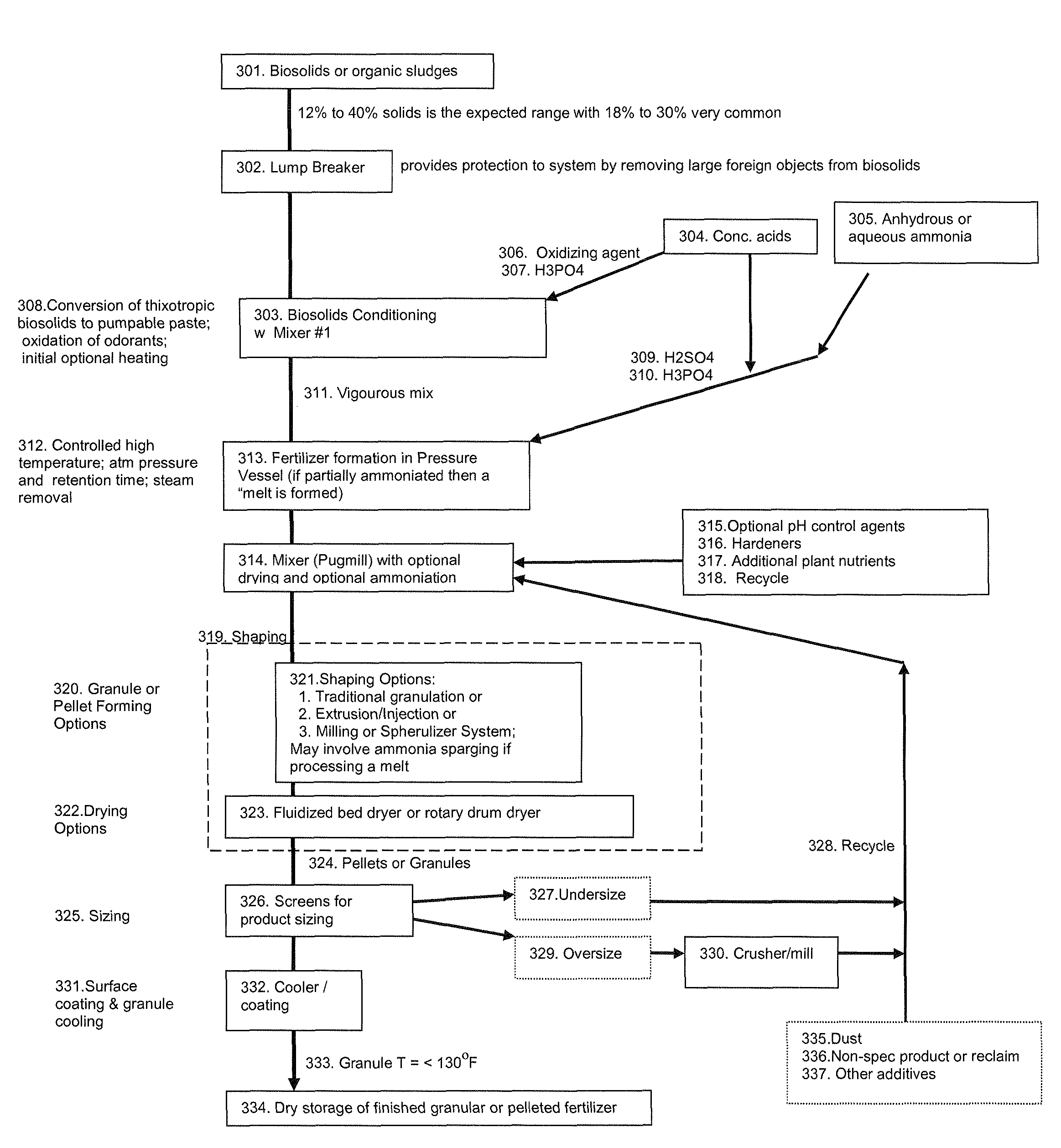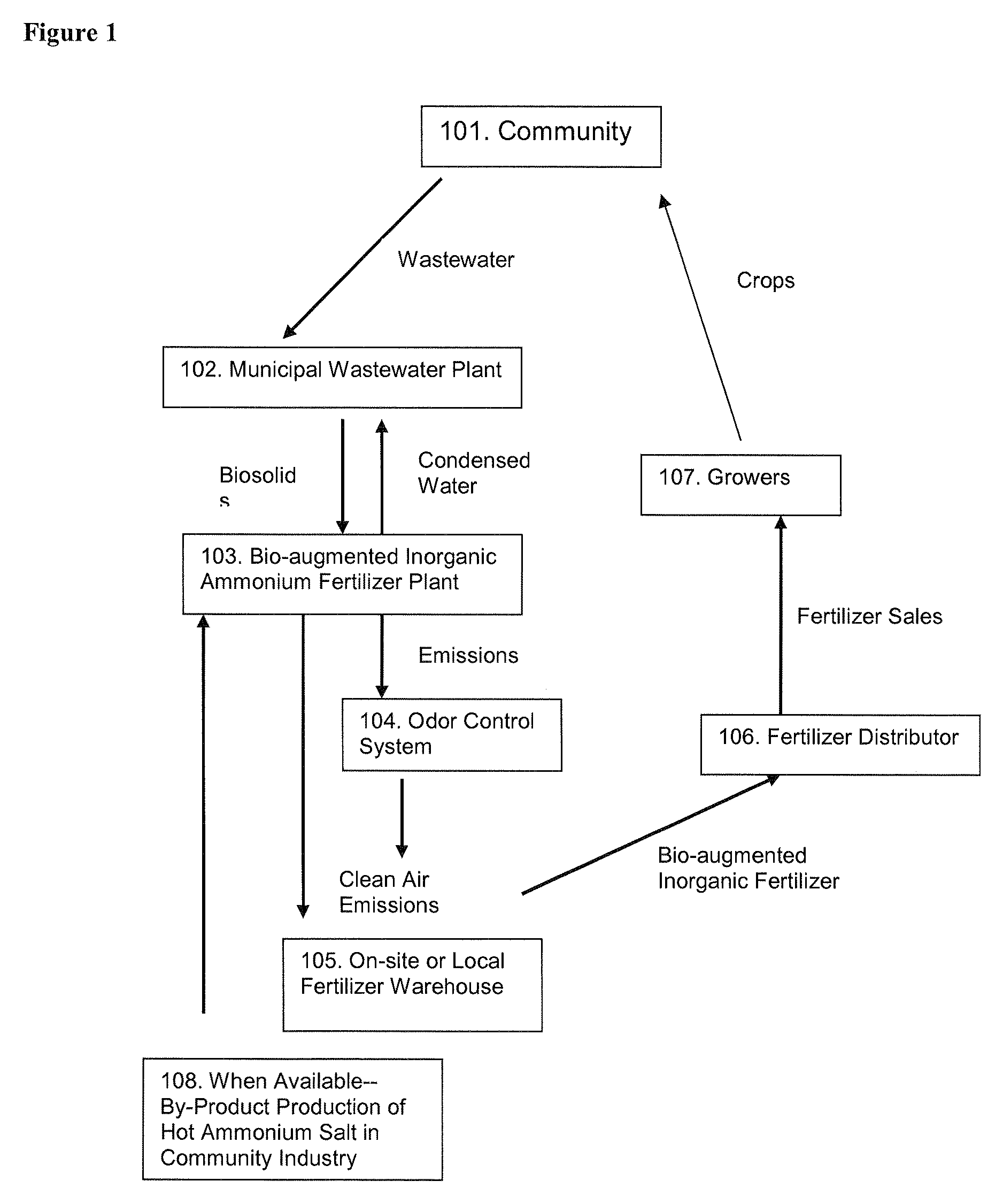Process for treating sludge and manufacturing bioorganically-augmented high nitrogen-containing inorganic fertilizer
a technology of inorganic fertilizer and sludge, which is applied in the direction of ammonium orthophosphate fertilisers, chemical/physical/physical-chemical processes, energy-based chemical/physical/physical-chemical processes, etc., can solve the problems of reducing the granule granule granule granule granule granule granule granule granule granule granule, reducing logistics and liability
- Summary
- Abstract
- Description
- Claims
- Application Information
AI Technical Summary
Benefits of technology
Problems solved by technology
Method used
Image
Examples
example 1
[0112]In this example municipal anaerobically digested biosolids that had been previously dewatered to 22% were received directly by conveyor for an adjacent wastewater treatment plant as illustrated in FIG. 4 and diagramed in FIG. 10. The received biosolids are initially passed through a lumpbuster device to screen out large contaminating rocks or metal and then into a large surge tank (24,000 gallon capacity) in the receiving area of the fertilizer manufacturing plant. The biosolids exit the surge tank to a positive displacement pump which then pumps the sludge at a rate of 6600 pounds per hour to the first pugmill (double shafted) for conditioning and mixing.
[0113]This manufacturing plant is set up so that on average 3 tons per hour of wet biosolids at 22% will be produced over a year with the manufacturing plant operating at a 90% efficiency. In order to ensure this output the plant is operated on an hourly basis of 3.3 wet tons of biosolids input per hour creating 3.8 dry tons ...
example 2
[0127]In this second example, the same 3.3 tons per hour of wet biosolids were processed in the AM process as described for the preferred embodiment of the present invention, however, all the anhydrous ammonia was added in the pressure vessel to complete ammoniation and formation of ammonia sulfate salt in the fertilizer mix. Although this fertilizer mix is not as fluid as when a melt is formed, the high head pressure and mechanical agitation was sufficient to cause the hot fertilizer mix to exit from the pressure vessel as required. No additional ammonia was sparged into the pugmill #2 or in the granulator in this Example 2. The remainder of the example is as was described for Example 1 with a similar quality fertilizer being produced.
PUM
| Property | Measurement | Unit |
|---|---|---|
| pressure | aaaaa | aaaaa |
| pressure | aaaaa | aaaaa |
| pressure | aaaaa | aaaaa |
Abstract
Description
Claims
Application Information
 Login to View More
Login to View More - R&D
- Intellectual Property
- Life Sciences
- Materials
- Tech Scout
- Unparalleled Data Quality
- Higher Quality Content
- 60% Fewer Hallucinations
Browse by: Latest US Patents, China's latest patents, Technical Efficacy Thesaurus, Application Domain, Technology Topic, Popular Technical Reports.
© 2025 PatSnap. All rights reserved.Legal|Privacy policy|Modern Slavery Act Transparency Statement|Sitemap|About US| Contact US: help@patsnap.com



